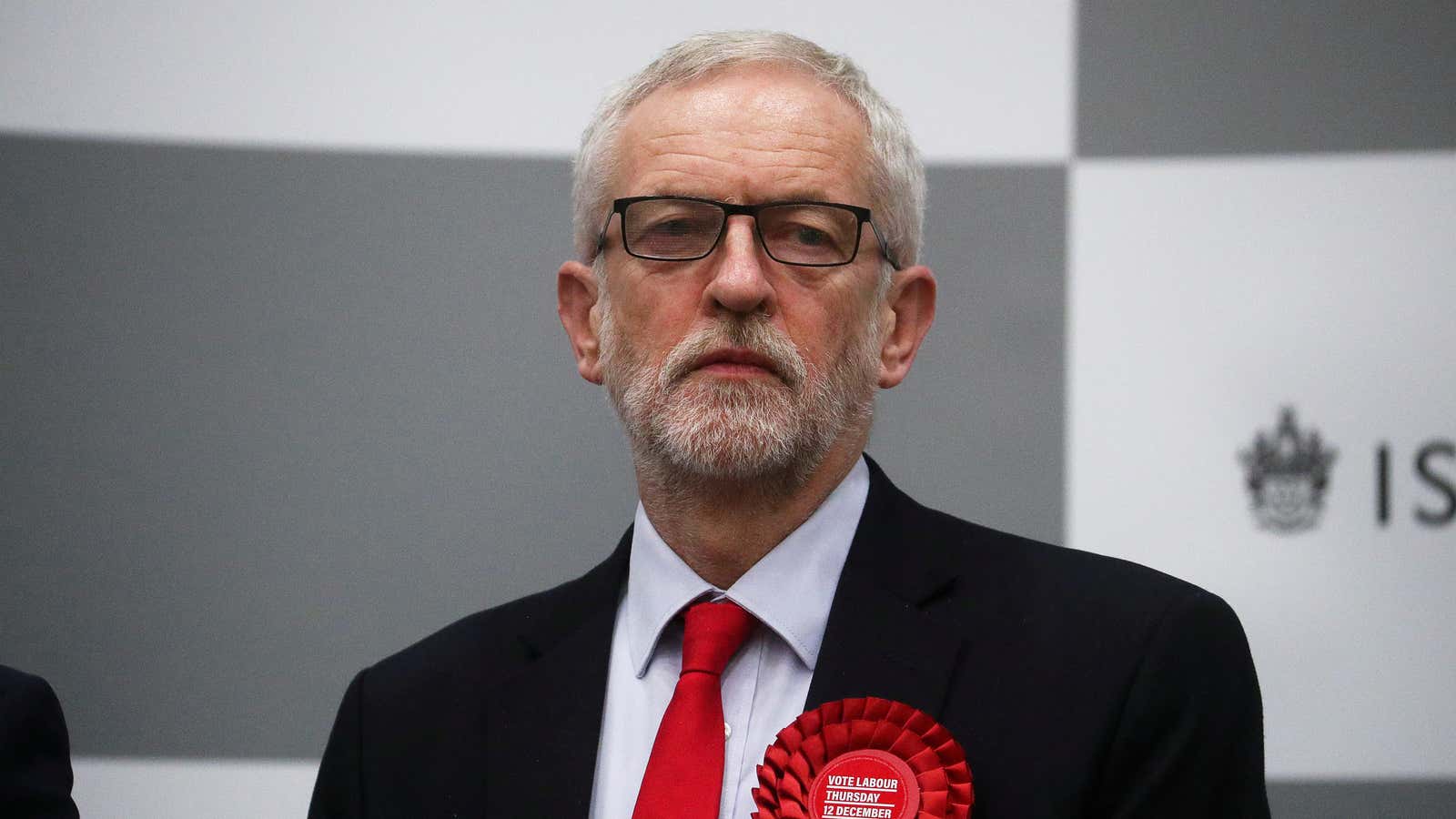The UK’s Labour party has suffered its worst election result in nearly a century, and is forecast to have 203 seats of a total 650. The result—down from 244 in 2017—is the party’s worst result since 1935, its share of the vote falling in almost every seat barring a few exceptions.
Labour leader Jeremy Corbyn said he would quit. “I want to make it clear that I will not lead the party in any future general election campaign,” he said. “I will discuss with our party to ensure there is a process now of reflection on this result and on the policies that the party will take going forward.”
In the weeks to come, Labour members will go to the polls to have their say on the party’s next leader. What will the next leader look like? Many people will want a female leader—despite being a progressive party, Labour has never had a woman at the helm. Other members may focus on choosing someone who can speak from experience about experiences concerning British minorities—especially with a prime minister who is often accused of bigotry and racism.
The biggest question, though, will be the new leader’s outlook: will they follow in Corbyn’s footsteps, or forge their own path? Here are a few options.
New “New Labour”
When Tony Blair swept to power as Labour leader in 1997, he did so by promising a neoliberal revolution for the party, in favor of social justice and market economics. Since 2015, veteran activist Corbyn has offered his own interpretation of what the party ought to be, promising compassionate policies for the many rather than the few, and prioritizing workers over big business.
This approach does not seem to have worked. Even before the election, dissatisfaction was clear, with 43% of Labour members saying that Corbyn was doing “a bad job.” The morning after the election, MPs and members alike have been describing the results as a rejection of Corbyn and everything he stands for, and evidence of his failure to lead the party.
This may be the time for yet another reinvention of the Labour party, pulling it closer to the middle ground and returning it to its “broad church” center-left roots. Candidates for leader would hope to bring disenfranchised Labour members back into the fold, attract younger voters, and maintain current support. Voters will be looking for a clearer line on Brexit and more moderate fiscal policies, as well as more action on anti-semitism allegations within the party.
Possible candidates: Jess Phillips, Keir Starmer, Yvette Cooper, Stella Creasy
Corbyn continuation
Despite the disappointing result, there’s evidence that Corbyn may have set the path of the Labour party for a long time to come.
The hard left Momentum group, which originally backed Corbyn as a candidate, still has significant sway over how the party is run. It claims a membership of 40,000, all of whom are also Labour members. While total Labour membership is in excess of 500,000 people, this small faction has proven to have significant sway power, particularly when it comes to choosing a leader. Momentum will likely back candidates who have been loyal to Corbyn in the past, including those who supported his original bid for leadership.
Possible candidates: John McDonnell, Rebecca Long-Bailey, Clive Lewis
Something in between
With Labour members split between former Blairites, Corbyn supporters, as well as those who are neither, there’s room for candidates who have struck a balance to come to the fore. MPs from the more progressive wing of the party, who have nonetheless deviated from the official party line on hot button topics such as Brexit, may find they have an opportunity here.
But whether it will be the right choice is unclear. Political commentators have compared this year’s election to Labour’s shocking defeat in 1983, under the leadership of similarly progressive Labour leader Michael Foot. His immediate successor, Neil Kinnock, also ran on a slate of left-wing policies in 1987 against Margaret Thatcher—and was subsequently trounced at the polls.
Possible candidates: Emily Thornberry, Angela Rayner
